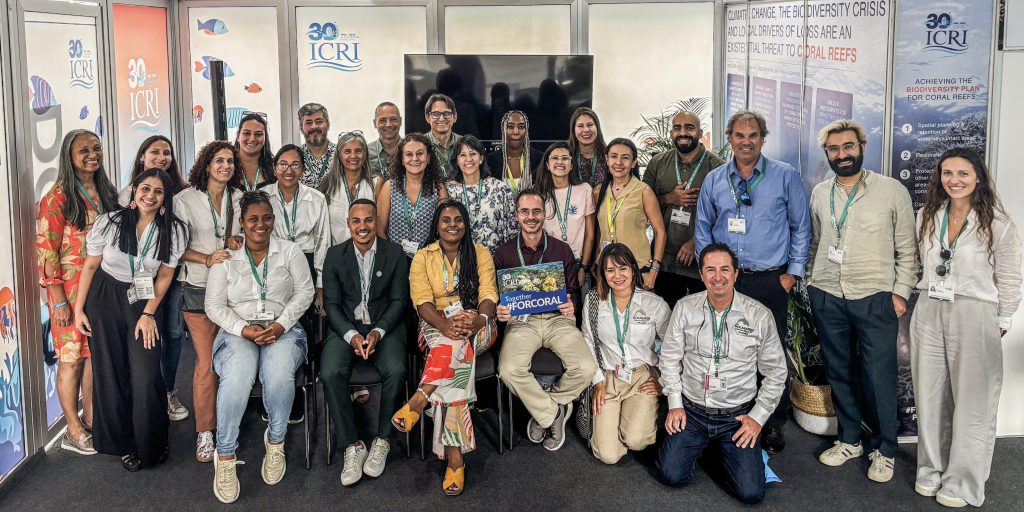
The COP16 Blue Zone event, Facing New Challenges for Coral Reef Conservation: Addressing Mass Bleaching Events and Coral Diseases, took place on October 22, 2024, as part of the International Coral Reef Initiative (#ForCoral Pavilion) at the COP16 climate conference. This critical session brought together some of the leading voices in coral reef conservation, including Dr. Valeria Pizarro from the Perry Institute for Marine Science (PIMS), Dr. Raúl Navas Camacho of INVEMAR, Dr. Lorenzo Álvarez Filip of Universidad Nacional Autónoma de México, and Dr. Karen Neely of Nova Southeastern University. Moderated by Dr. Craig Dahlgren, a prominent marine ecologist and our executive director, the panel explored the urgent threats facing coral reefs in regions such as Colombia, The Bahamas, Mexico, and the United States. As part of COP16, a major international conference on biodiversity and climate change, this panel was a critical moment to address the accelerating degradation of coral ecosystems and propose cross-sectoral solutions to protect these vital habitats.
Below, we highlight the seven most crucial takeaways from the first panel, focusing on urgent issues like coral bleaching, stony coral tissue loss disease (SCTLD), and innovative conservation strategies for reef ecosystems.
1. Coral Bleaching Is Intensifying – And So Are Its Consequences
Coral bleaching has become an increasingly frequent and devastating phenomenon as ocean temperatures rise due to climate change. During the panel, experts highlighted how rising temperatures cause corals to expel the symbiotic algae living in their tissues, leading to a loss of nutrients and color. This process weakens the coral, leaving it vulnerable to disease and death.
Key Impact: Valeria Pizarro, a senior scientist at the Perry Institute for Marine Science (PIMS), underscored the need for collaborations between countries in both the Global North and South to address bleaching and other environmental threats. She emphasized that while these countries need to work together as equals, they must also recognize and address their unique challenges. The panel also discussed a poignant example from a restoration project in the Caribbean, where a single heatwave wiped out an entire coral nursery, highlighting how quickly climate events can reverse years of conservation work.
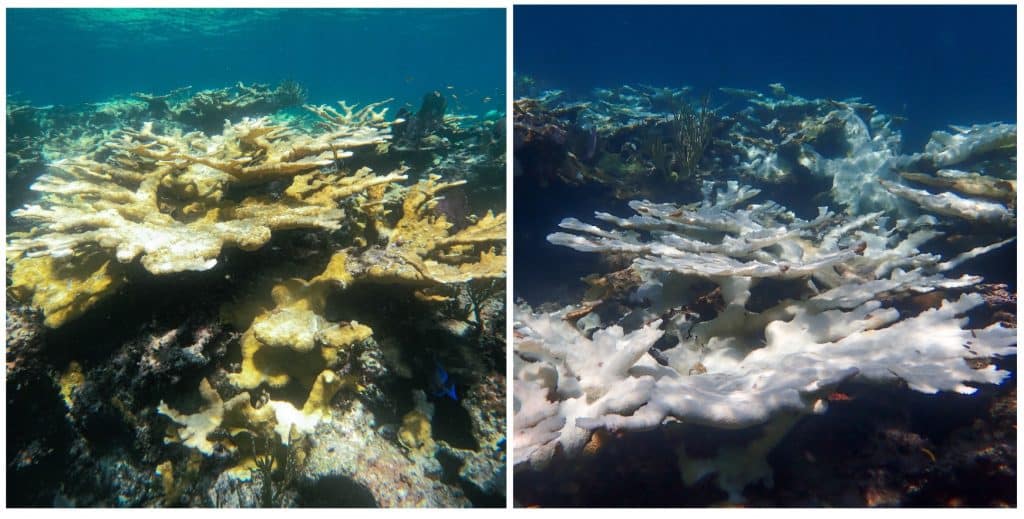
2. Stony Coral Tissue Loss Disease (SCTLD) Is Spreading Rapidly
SCTLD, a relatively new disease first identified in 2014, has already wreaked havoc on coral reefs across the Caribbean, killing over 30 species of hard corals. Unlike coral bleaching, which is a response to environmental stress, SCTLD is an infectious disease that causes rapid tissue death in corals.
Key Challenge: Karen Neely, a lead researcher at Nova Southeastern University, discussed the importance of acting urgently with the tools and knowledge already available. She pointed out that while we have methods to mitigate SCTLD, the real barriers lie in a lack of political will and funding. Neely’s insights were reinforced by the broader panel discussion, which stressed the need to involve both the private and public sectors to address this disease, including creating incentives for industries such as tourism and diving to contribute to reef conservation.
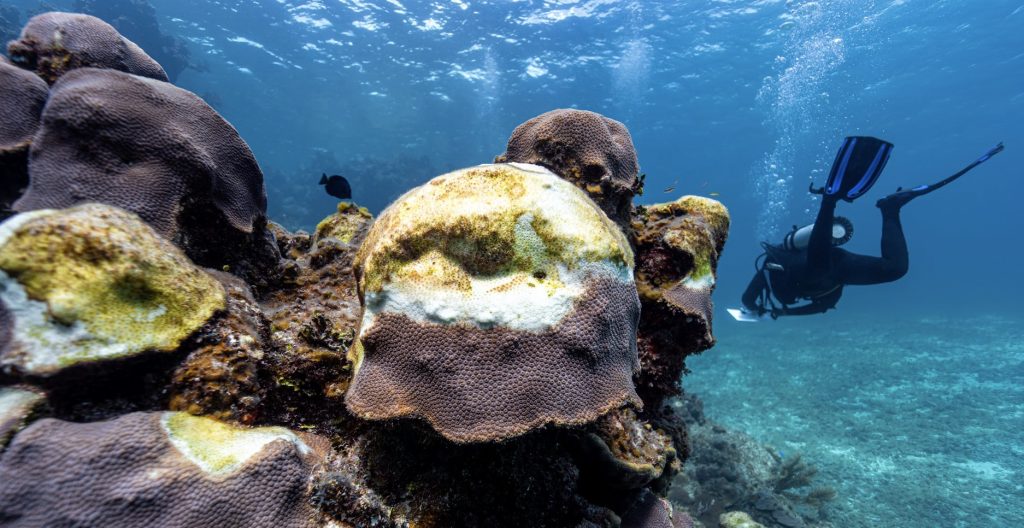
3. Restoration Efforts Must Diversify to Adapt to New Realities
One of the key lessons learned from recent restoration failures, according to the panel, is the importance of diversifying coral species and genetic varieties used in nurseries. In response to coral bleaching and disease, scientists are now focusing on cultivating a wide range of coral species and genotypes to ensure some resilience to future environmental changes.
Innovative Strategy: By spreading restoration efforts across different locations and incorporating multiple coral species, conservationists aim to safeguard against localized environmental shifts and unpredictable heatwaves or disease outbreaks. Thomas Dallison from the International Coral Reef Initiative (ICRI) emphasized the need for collaboration among coral restoration practitioners globally. He suggested that ICRI could act as a platform to connect scientists and practitioners, particularly in regions like Colombia, where significant restoration efforts are already underway.
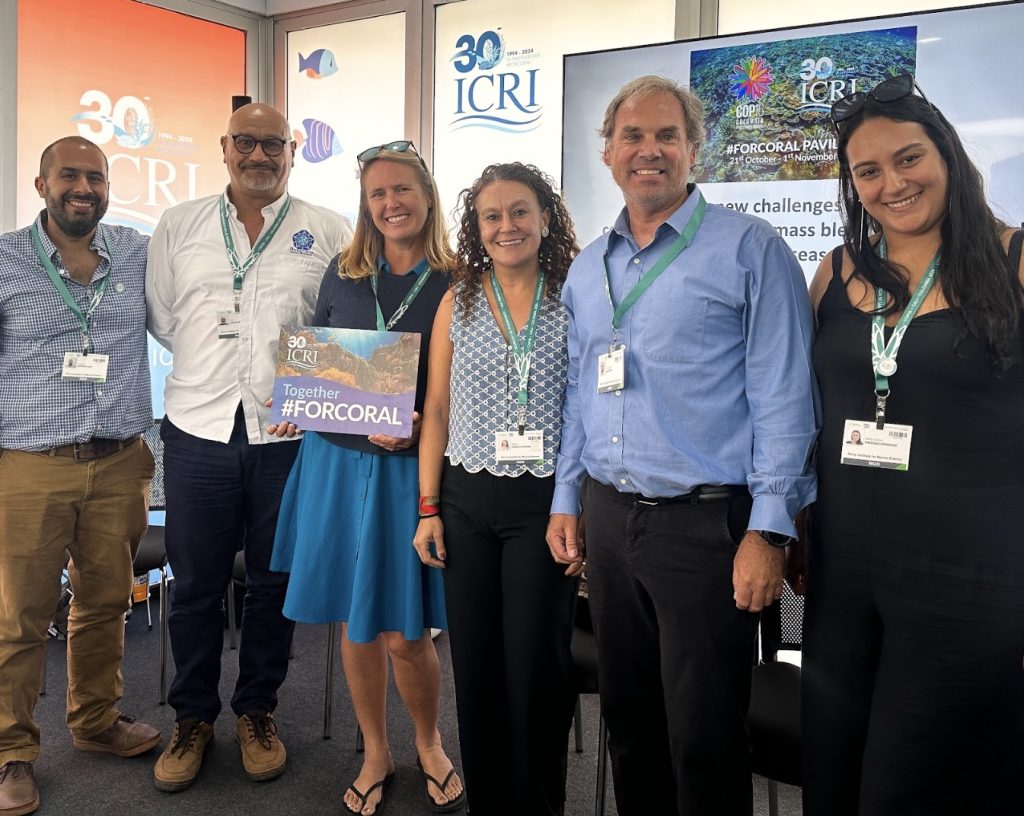
4. Collaboration Between Scientists and Legal Advocates Is Essential
Throughout the discussion, panelists stressed the importance of integrating climate litigation into marine conservation efforts. Legal action, especially through international courts like the Inter-American Court of Human Rights, is seen as a critical tool for holding governments accountable and driving policy changes that can protect coral reefs and marine ecosystems.
Barrier to Overcome: Many scientists, particularly in Latin America, have traditionally avoided political advocacy, preferring to focus on fieldwork. The panel underscored the need for breaking down barriers between scientists and legal advocates to push for more significant action on the international stage. Valeria Pizarro’s comments reinforced this point, advocating for a greater political and legal push to protect coral ecosystems from the large-scale threats posed by climate change.
5. Engaging the Private Sector in Coral Conservation Is Challenging but Necessary
Mobilizing private sector funding for coral reef conservation is a complex challenge due to the hidden nature of reefs beneath the ocean surface. Unlike forests or mangroves, which are highly visible, coral reefs don’t easily attract business investments because most people, including business leaders, never see them firsthand.
Unique Opportunity: The panel discussed innovative strategies to engage industries that rely on healthy reefs, such as tourism and the cruise industry, by incorporating them into reef restoration programs. Panelists suggested that exposing business leaders to both healthy and degraded reef systems firsthand could foster greater understanding and investment. Karen Neely stressed the need to incentivize industries that directly benefit from reefs, like tourism, to invest in coral restoration efforts.

6. Education and Public Awareness Are Critical to Coral Conservation
A significant barrier to coral reef conservation, as noted by the panelists, is the lack of public understanding of coral ecosystems. Many communities living near reefs do not fully appreciate their value, both ecologically and economically. Without a connection to these ecosystems, local populations and decision-makers are less likely to support or invest in conservation efforts.
Proposed Solution: Educational outreach is crucial to improving public awareness of coral reef conservation. Several panelists advocated for direct engagement strategies, such as organizing trips for community leaders, policymakers, and business stakeholders to coral reefs to help them understand the urgent need for protection. This could foster more investment and participation in reef conservation initiatives, especially from sectors that rely on reef health for economic activities, such as fisheries and tourism.
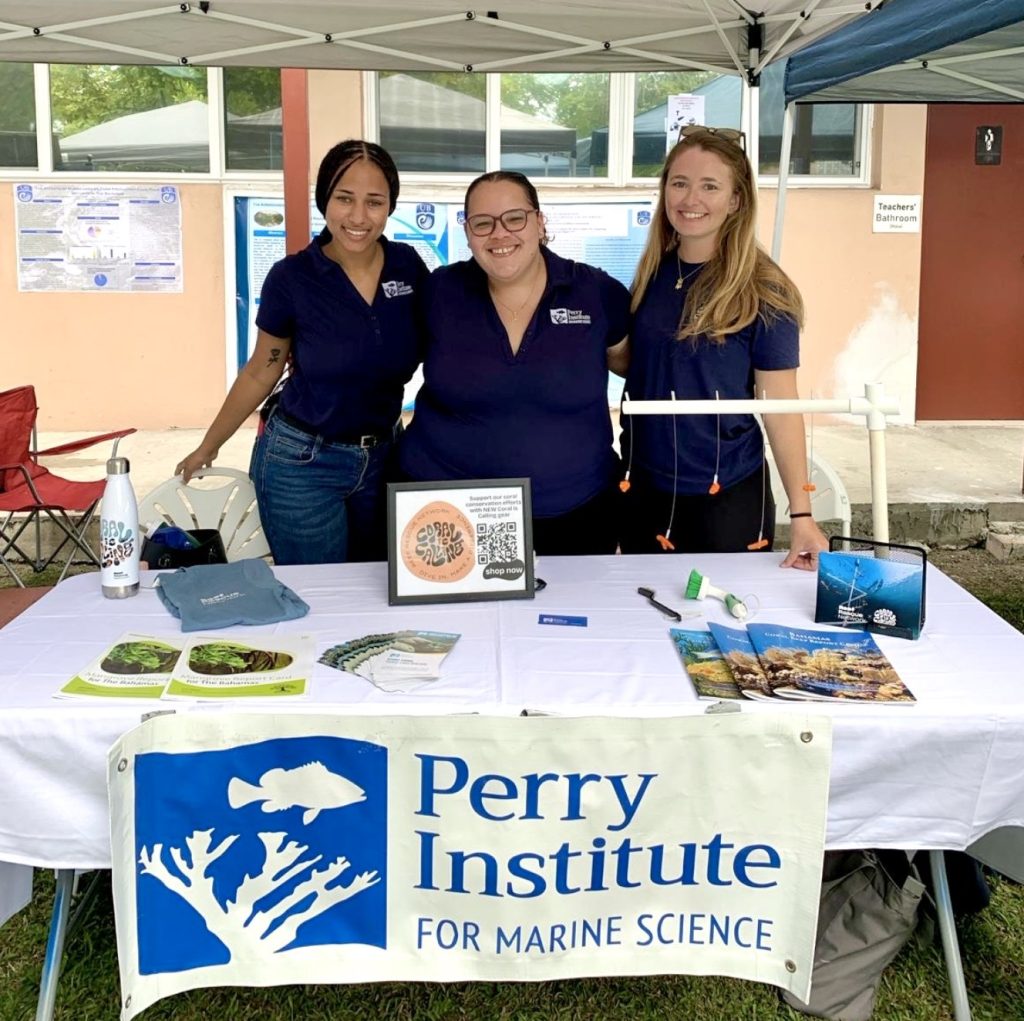
7. The Role of Local Communities in Coral Restoration
The panel highlighted the growing involvement of local communities in coral restoration initiatives. Programs in the Caribbean and Latin America are training fishermen, dive operators, and other local stakeholders to assist in monitoring and restoring coral reefs. This local involvement is vital for fostering a sense of ownership and stewardship over these natural resources.
Long-Term Benefit: Empowering local communities to participate in restoration projects not only strengthens conservation efforts but also ensures that these ecosystems are maintained for future generations. By providing these communities with the knowledge and tools to restore their reefs, the panelists believe that long-term sustainability can be achieved, creating a model of shared responsibility and engagement in protecting vital ecosystems.
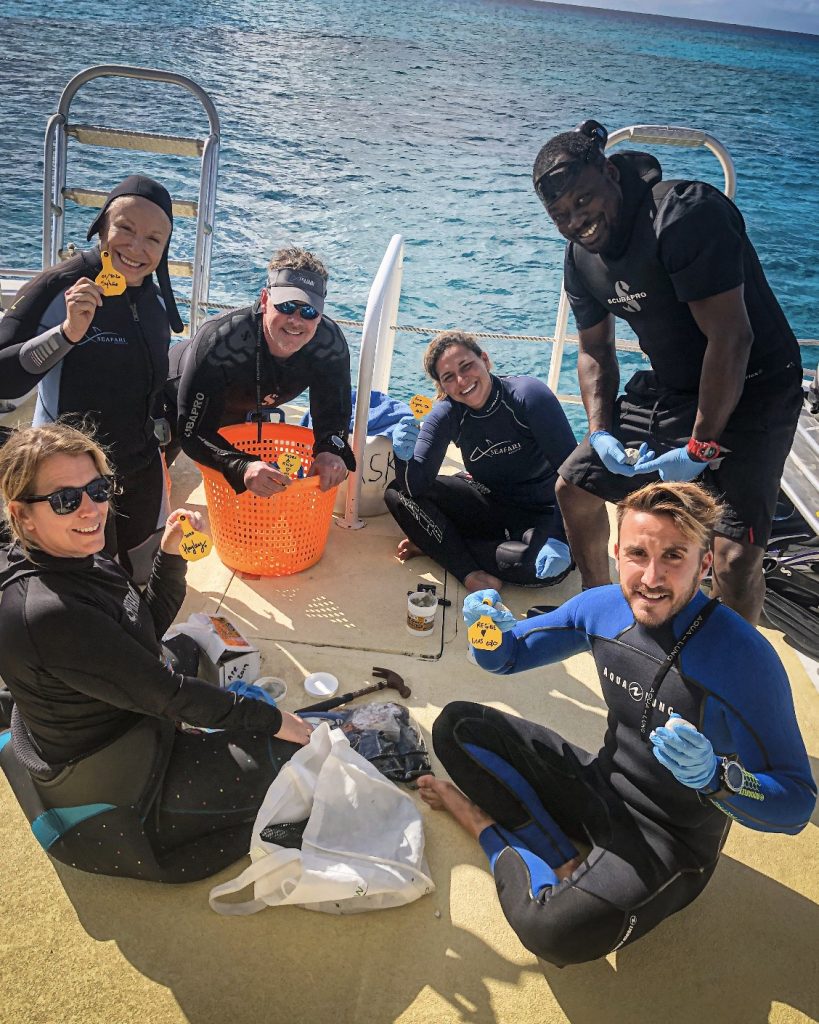
Conclusion
The first panel of the COP16 event delivered a clear message: the world’s coral reefs face unprecedented threats from both climate change and diseases like SCTLD. Yet, the speakers offered a sense of hope by outlining a pathway forward. By diversifying restoration strategies, strengthening collaboration between scientists and legal advocates, and involving both the private sector and local communities, we can begin to address the crises threatening these vital ecosystems. However, urgent action is needed, and multi-level efforts—ranging from individual behavior changes to large-scale legal initiatives—are essential to ensuring the long-term survival of coral reefs. The panel left attendees with a renewed sense of purpose, emphasizing that while the challenges are great, so too is the potential for impactful solutions.
Frequently Asked Questions (FAQs)
1. What were the main topics discussed at the COP16 coral reef conservation panel?
The COP16 panel on coral reef conservation discussed pressing issues like coral bleaching, Stony Coral Tissue Loss Disease (SCTLD), diversified restoration strategies, legal advocacy, and the importance of involving both the private sector and local communities in conservation efforts.
2. Why is coral bleaching such a significant threat to coral reefs?
Coral bleaching is a severe response to rising ocean temperatures, causing corals to expel essential algae, which weakens them and leaves them vulnerable to disease and death. This process has worsened with climate change, posing an escalating threat to reef ecosystems.
3. What is Stony Coral Tissue Loss Disease (SCTLD), and how does it affect coral reefs?
SCTLD is a contagious disease that causes rapid tissue death in coral, leading to widespread mortality among hard coral species. Since its discovery in 2014, SCTLD has spread across the Caribbean, posing a severe threat to coral biodiversity and resilience.
4. How is the private sector contributing to coral reef conservation?
The private sector, particularly industries like tourism, is being encouraged to support reef conservation by funding restoration projects and conservation efforts. Some initiatives aim to foster awareness among business leaders to promote investment in sustaining reef health.
5. What role do local communities play in coral restoration efforts?
Local communities are increasingly involved in coral restoration through training and direct participation in monitoring and restoration activities. This involvement fosters stewardship, helping to protect and sustain coral reefs for future generations.
6. How can climate litigation support coral reef conservation efforts?
Climate litigation, including international courts, can hold governments accountable and enforce policies that protect marine ecosystems. Collaborating with legal advocates can drive impactful policy changes for coral reef conservation.
Dive Deeper
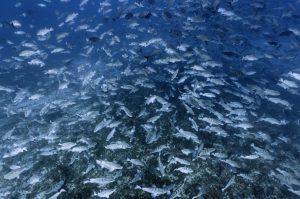
Thriving Fish Spawning Aggregation Inspires Hope for the Future
Nassau grouper FSA in Ragged Island during January 2025. | © André Musgrove Fish Spawning Aggregations & Nassau Grouper Imagine witnessing thousands of fish gathering in a synchronized spectacle, moving
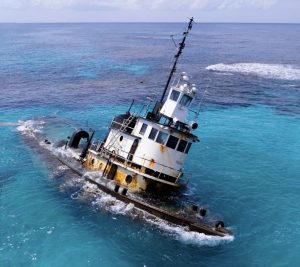
A Year Later, Stranded Tug and Barge Still Scars Reef in Fowl Cays National Park–Residents Demand Accountability
A haunting aerial view of the grounded tug and barge in Fowl Cays National Park—still embedded in coral a year later, a stark reminder of the cost of inaction. Photo

Women Leading Mangrove Restoration in The Bahamas
Have you ever wondered who’s behind the scenes saving our environment, right in our own backyard? Picture a group of energetic, determined women rolling up their sleeves and diving into

Rewilding the Marls of Abaco: PIMS Plants 100,000 Mangroves and Counting in 2024
As the afternoon sun bathes the Marls of Abaco in golden light, Bahamian boat captain Willis Levarity–locally known as “Captain to the Stars”–stands ankle-deep in soft, warm mud. A broad

Unveiling Coral Reef Biodiversity: Insights from ARMS Monitoring Structures
An ARM teeming with new coral recruits and a diversity of marine life, highlighting reef recovery and biodiversity Understanding Coral Reef Biodiversity Most new PhDs in the natural sciences move

7 Key Takeaways from COP16: Confronting Coral Reef Challenges in a Changing Climate
United #ForCoral: Experts, advocates, and leaders from across the globe join forces at COP16 for the #ForCoral conference, hosted by the International Coral Reef Initiative. Together, they’re driving urgent action




